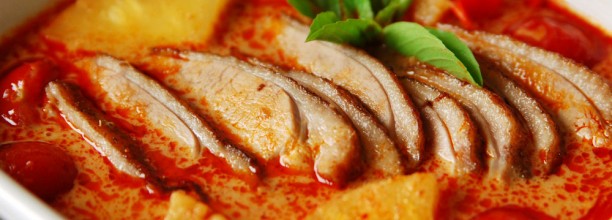
Darren Gall, puts out the fire of spice in his mouth with the requisite wines.
“The year was 1968. We were on recon in a steaming Mekong Delta. An overheated private removed his flak jacket, revealing a t-shirt with an iron-on sporting the Mad slogan “Up with miniskirts!” Well, we all had a good laugh, even though I didn’t quite understand it. But our momentary lapse of concentration allowed Charlie to get the drop on us. I spent the next 3 years in a POW camp, forced to subsist on a thin stew made of fish, vegetables, prawns, coconut milk and four kinds of rice. I came close to madness trying to find it here in the States but they just can’t get the spices right.” Seymour Skinner
Living in the wonderful city of Phnom Penh one gets to enjoy their fare share of spicy Khmer, Thai, Vietnamese Chinese and Korean cuisine. There is also a smattering of very good Indian and Pakistani restaurants, even Mexican and Creole cooking. Ah the spice(s) of life but, what are the best wines to drink with these spicy foods? How to avoid a fire breathing episode with arms flailing about wildly trying to get a waiter’s attention to ask for copious pitchers of ice cold water?
Whilst taste is a highly subjective and personal matter along with the food/wine pairing relationship, I thought I’d share with you my experiences and philosophies after almost half a lifetime drinking wine in Asia.
Firstly, it helps to understand a little about peppers, what makes hot peppers hot is an alkaloid called capsaicin and related compounds known as capsaicinoids. When capsaicinoids bind to pain receptor neurons on the tongue they immediately send messages, (probably along the lines of: ouch this is bloody hot) to the brain. Now it will also help to learn that Capsaicin is insoluble in water -which is why drinking icy water provides little relief from the burn beyond the first few precious gulps, once the mouth warms up the burn is back.
In some regions of the sub-continent they serve yoghurt drinks to go with rich fiery curries; capsaicin is fat soluble and yoghurt shakes are cold, high in lactic acidity (to stimulate saliva flow) and have some sweetness (which is also proven to ameliorate the burn), this makes a yogurt shake a very effective remedy.
However, if knocking over a few bottles of vintage yoghurt at dinner is not your idea of a fine repast, good news is at hand. Capsaicin is also soluble in alcohol and fruit sweetness, (natural fruit sugars) such as those found in wine is very effective at ameliorating mouth-burn. Acidity is also effective in wiping out some of those burning sensations because of its promotion of saliva flow.
It is important to remember that Alcohol, once it reaches certain concentrations, (usually once you get up over about 12.5% Alcohol to Volume) gives off a warm feeling in the mouth and we certainly don’t want to be attempting to wash away heat with more heat!
That is why I look to low-alcohol wines to match with hot and spicy dishes, wines from cooler climates with alcohol levels under or up to about 12%.
Regardless of heat intensity I always like to try to match the weight or body of the wine to the weight of the dish. Put simply, for lighter dishes I look to lighter bodied wines and for heavier dishes I look to fuller bodied wines.
Matching wine to hot, spicy fuller bodied dishes should not mean higher in alcohol, oak character and tannin, I find tannin and oak are amplified with hot spicy foods and are generally an all together unpleasant combination. In my opinion, big spicy, alcoholic reds brimming with woody/ oak characters and aggressive tannins render the dish awful and your palate wanting to sue you for malpractice.
When matching wines to lighter bodied, spicy dishes such as Thai salads and soups, fish, hot and sour dishes or vegetarian curries, my preferred wine of choice is a cool-climate, low alcohol riesling, usually from Germany or Alsace France, but it may be from Australia or New Zealand; the higher the heat intensity the sweeter I tend to like it. Pinot gris or pinot grigio can also work well as can sauvignon blanc and a light gewürztraminer. A juicy viognier, (but again watch the alcohol level)can work well with curried chicken dishes, whilst with dishes of extreme heat intensity a slightly spritzyMoscato or even a dessert style, late harvest wine are both interesting matches that tend to work well.
When it comes to fuller flavoured dishes and red wines I tend to be a little more controversial. I look for rich, juicy, flavourful reds with good acidity, low alcohol and barely perceptible tannins. The wine that works perfectly well for me is a good, rich, cool-climate, New World pinot noir or a riper French Burgundy. Now whilst these wines are generally categorized as medium bodied, the rich primary fruit flavours and good acidity see them stand up to the most vigorous red curry beef or Szechuan peppered pork. A Cote du Rhone or Cool Climate syrah/shiraz will also do nicely just watch the alcohol levels.
I’ll finish with my all time favourite combination, because I live in eternal hope that when I finally ascend to the restaurant at the top of the universe, the waiter will smile, wink and without even bothering to take my order he’ll pop out to the kitchen and return with a dish of red curried duck and a pot of steaming saffron rice, whilst somewhere over my shoulder the sommelier is already decanting a middle aged DRC Richbourg, (pinot noir) from a very good year.
